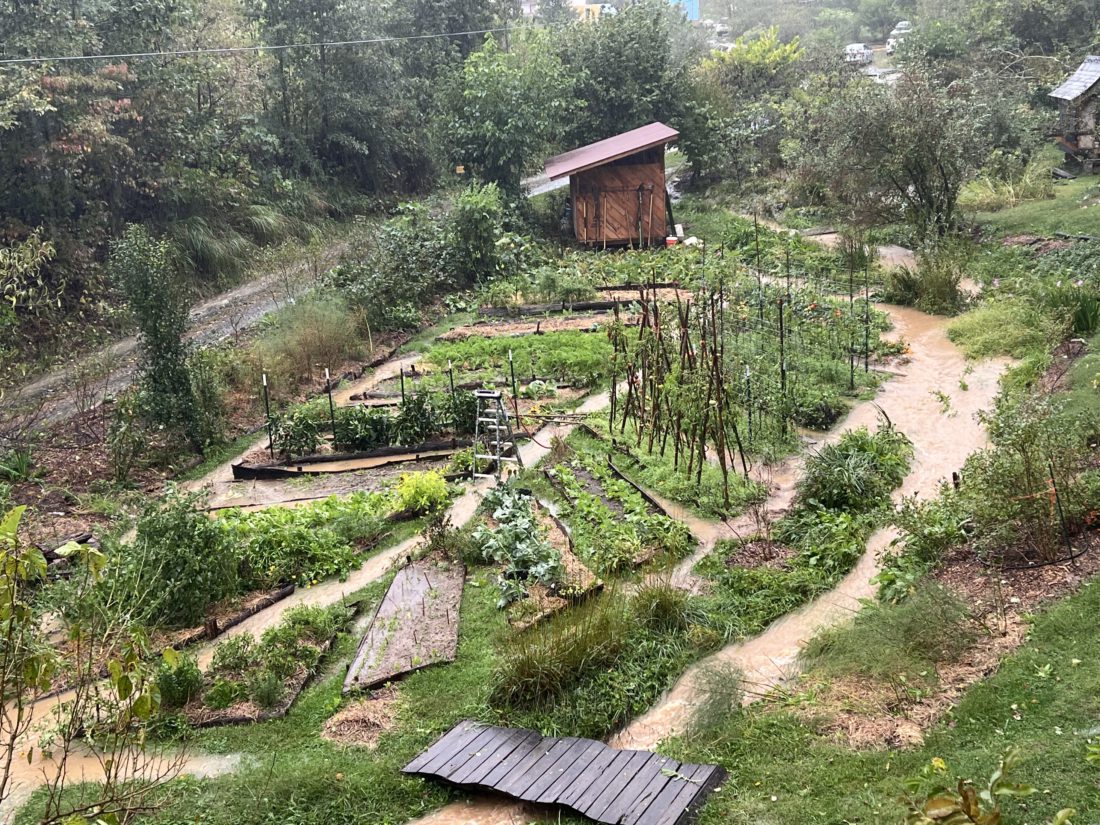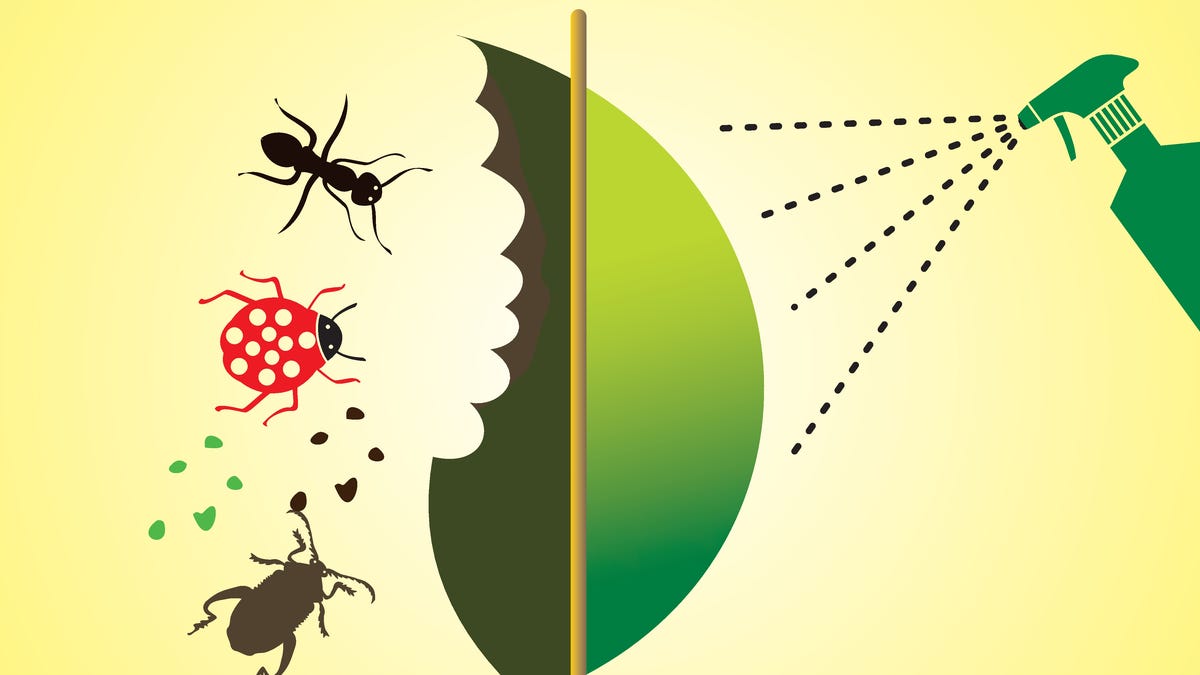Warmth and nourishing greens to you, Western North Carolina gardeners. I mourn the crops and gardens that were washed away by Tropical Storm Helene. I give thanks for those that remained and likely fed you and your neighbors while the stores were bare. And I call upon the wisdom of the seeds that know how to bring life to disrupted and disturbed ground. This is my last gardening feature of 2024; I’ll be back in early spring 2025.
This month, I’m going to share my thoughts and experience around building resilience into your garden.
Water resilience in the garden
In these weeks after Tropical Storm Helene, we’re all feeling humbled by the incredible power of water. This element can, as we’ve seen, surge to the point of destruction. At the same time, we need it daily to survive and thrive.
Gardens without water aren’t gardens at all. Yet, most of us with access to pressurized water through city systems or electrically pumped wells easily take it for granted. We’re used to this life-giving liquid simply flowing from our hoses whenever we need it.
In the practice of permaculture, which is an approach to working in collaboration with living systems (like the water cycle), redundancy is one way to build resilience. When it comes to water in the garden, this means having multiple sources of water, along with using mulch, drought-resistant crops and other techniques to minimize water needs.
One great way to bring water to your garden is by harvesting and storing rainwater, whether it’s your primary irrigation source or a backup. Here in WNC, we get plenty of rain each year to water most home gardens, even big ones.
The trick is to catch the water running off metal roofs and other clean-enough surfaces and to store it, ideally in a location that’s uphill from your garden. This way, when you need the water, it will simply flow down to the garden through a hose powered by gravity, whether the electric power is on or not. (For more details on catching, storing and using rainwater, see a blog post I wrote for Wild Abundance: avl.mx/pryg.)
If you have a well, another option for water resilience is to use a solar-powered pump. These are a bit pricey — from a couple to a few thousand dollars — but adding one can mean that you don’t just have water for your garden when the power goes out, but for your home as well.
A solar pump will only work while the sun is shining unless you connect it to a battery bank that can store electricity for times of darkness. To keep the water flowing at all hours, even without batteries, you can place a cistern uphill from your house that fills when it’s sunny, providing gravity-powered water when it’s not.
Finally, locating the nearest bodies of water and making a plan for bringing that water to your garden adds another layer of resilience. Our mountains are full of creeks and streams, as we’ve all become keenly aware. Even a tiny trickle can usually fill a bucket or watering can. If you notice a wild water source uphill from your garden, you may be able to use that to fill a cistern or other tank, thus creating a gravity-fed system for irrigation just like a cistern filled by a solar well pump.
Of course, it’s important to think of the overall health of aquatic and riparian ecosystems when we tap into creeks and springs. That means remembering that the water isn’t just there for the taking, but plays a key role in the lives and homes of many creatures other than humans, too.
Diversity breeds resilience
Another way to tend your garden so that it’s more likely to withstand the pressures of climate change, including natural disasters, is to celebrate and cultivate diversity. This can mean something as simple as growing many kinds of crops or different varieties of the same crops. When we do this, it’s more likely that at least something will do well and provide a yield, even if others don’t.
Diversity in the garden can also look like growing perennials such as fruits, nuts and berries, along with annuals like carrots and tomatoes. Where I live, we have lots of mature chestnut and pawpaw trees. In the days just after the storm, when cell service and power were still out, the children in our neighborhood were heard discussing how dire things were. One of them said, “Well, at least we have plenty of chestnuts and pawpaws. We’re going to be fine.”
Diversity can also look like growing food crops in more than one location. Here in the mountains, the wide, flat areas around waterways are some of the best places to grow gardens — most of the time. As we’ve recently learned, they also have their risks.
That doesn’t mean we shouldn’t grow in those places in the future, but it’s also a good idea to cultivate higher ground and maybe include some veggies in containers right near the house. Tending multiple garden locations can get laborious, so choosing a few key spots and sticking with them is the best approach.
Interdependence
Community interdependence is our greatest strength, in the garden and in general. Some of us come into gardening motivated by the idea of self-sufficiency. It’s a beautiful thing to be in direct relationship with the source of our sustenance and to negotiate with the living world in order to eat, instead of with the profit-driven industrial food system.
That being said, the way things work in that food-giving, living world is through collaboration. So many forces, elements and beings work together for the plants, animals and fungi we’re nourished by to thrive. So, we too can embrace the spirit of working together, interdependently, for the strength of our gardens and our lives.
How many of you have been completely bowled over by the power of kindness and the generosity of your neighbors in the past several weeks? And how many of you have met folks who live very close to you, whom you never knew before?
Out here in Barnardsville, where I live, we have mobilized community care to provide clean water, food, fuel, medical care, transportation, companionship, pet care, child care and more among folks who share this valley. In doing so, we’ve seen that what some people desperately need, others may have in abundance; it’s just a matter of making the connections and inviting the goodwill of both giving and receiving.
What does this have to do with gardening, you may be wondering? Well, it’s the notion that we can’t all do it all, and we’re stronger together.
Here’s a practical, garden-oriented example of what I mean: Imagine that you live in a moderately shady spot, but you have a great greenhouse and can grow winter greens like it’s nobody’s business. Trouble is, you leave the area for a month each winter, so you can’t always tend the greens well. Your neighbors down the way have a really sunny garden that’s perfect for growing heat-loving crops like tomatoes, peppers, melons and squash. They happen to be carpenters, so the growing season is their busy time at work.
What if y’all work together to care for the hot-weather crops, sharing the harvest? Then you enlist them to keep the greenhouse watered and cared for while you’re out of town in the winter? Everybody ends up with more bounty and less stress, just by thinking outside the box of our individualism!









